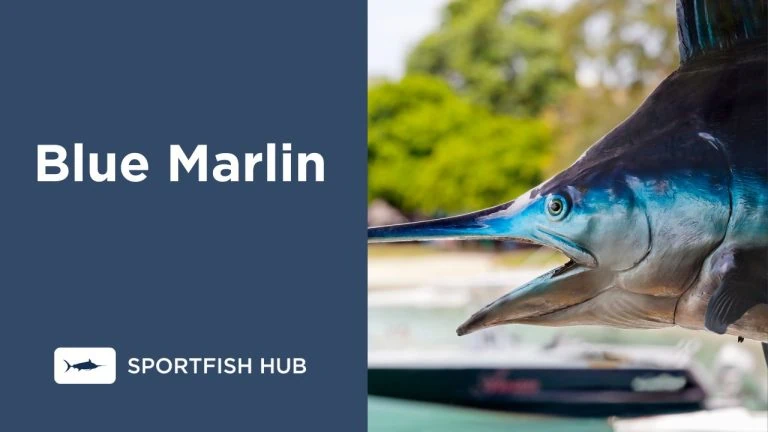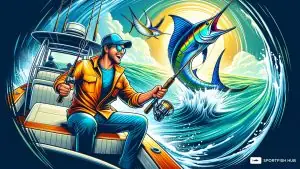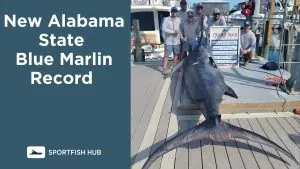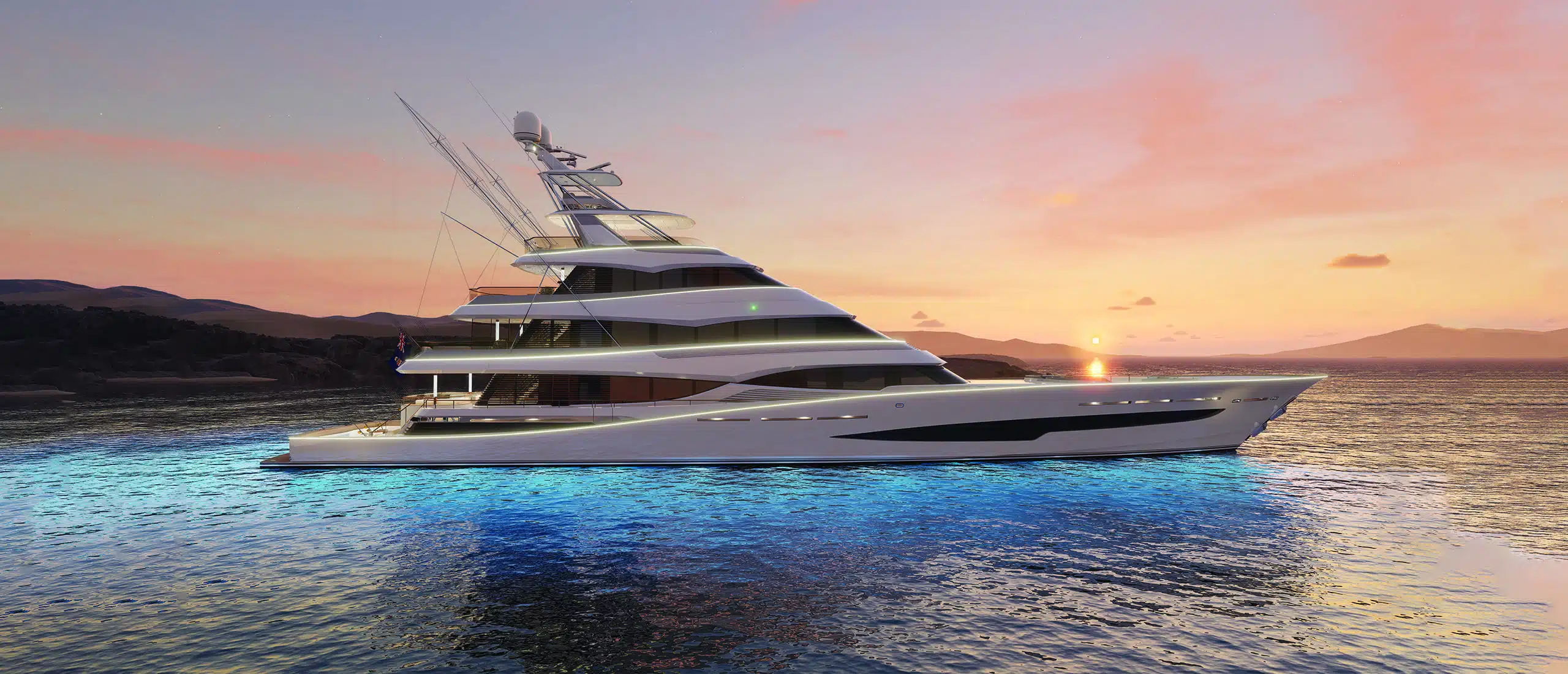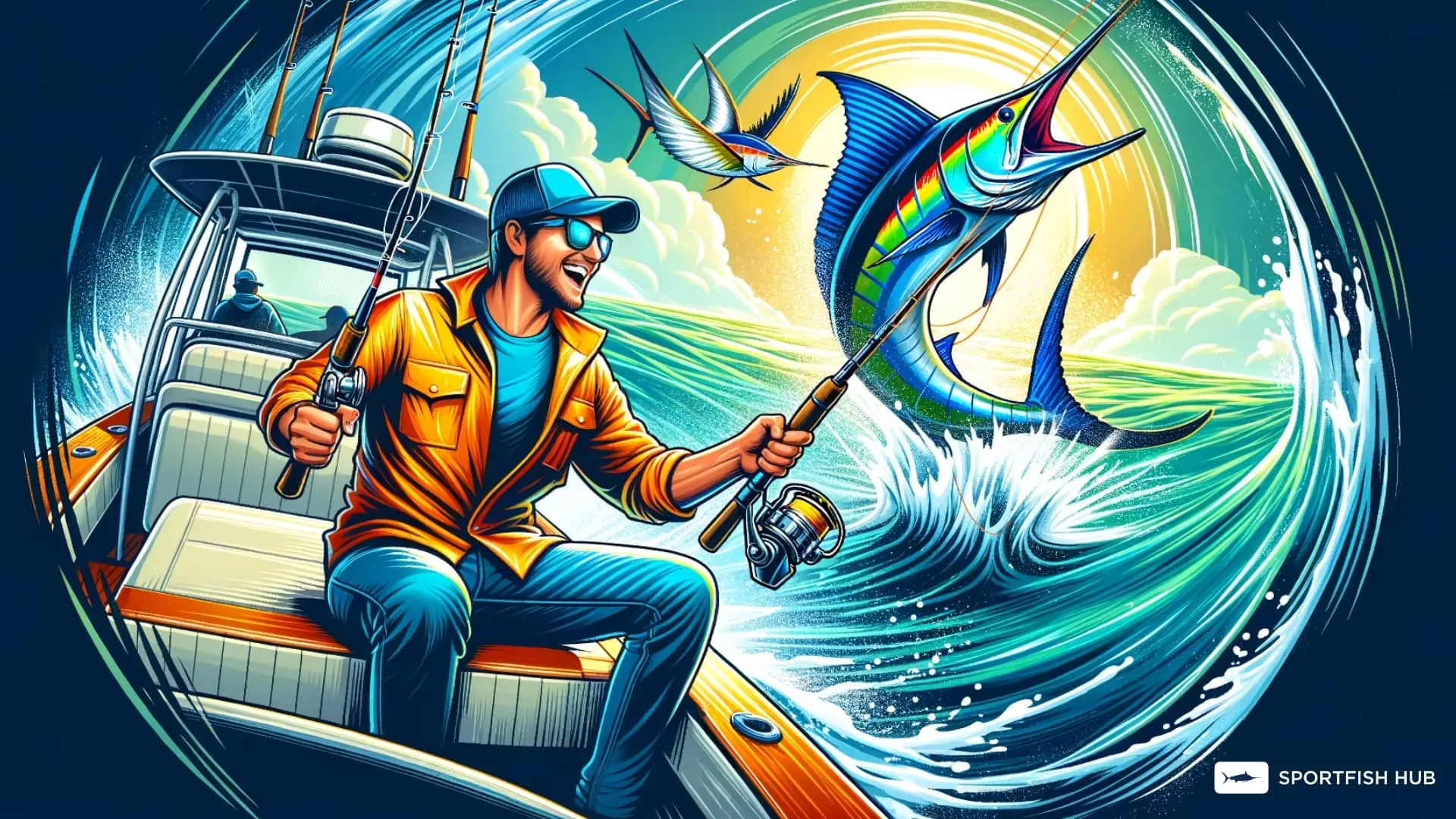Blue marlin are highly sought after game fish that provide an exciting challenge for anglers around the world. Often called ‘true water thoroughbreds’, these fish are pound for pound one of the strongest fighting fish in the ocean. Their strength, speed, and aerial acrobatics make them a dream catch for serious sport fishermen.
Table of Contents
- An Introduction to Blue Marlin (Taxonomy)
- Blue Marlin Facts and Behavior
- Why Target Blue Marlin?
- Blue Marlin Habitats
- Best Time to Catch Blue Marlin
- Blue Marlin Fishing Methods
- Blue Marlin Fishing Tackle
- Atlantic Blue Marlin vs Pacific Blue Marlin
- Releasing vs Keeping Marlin
- Finding a Quality Charter
- Blue Marlin Fishing Adventure Awaits
- FAQ
An Introduction to Blue Marlin (Taxonomy)
Blue marlin (Makaira nigricans) are large pelagic billfish that inhabit tropical and subtropical waters of the Atlantic, Pacific, and Indian Oceans. They are apex predators known for their long, spear-shaped bills and brilliant dark blue coloring above the lateral line, transitioning to silvery white below.
Some key facts about blue marlin:
- Scientific name: Makaira nigricans
- Average size: 200-400 lbs; up to 2000 lbs
- Identifying features: Long dorsal fin, anal fin and bill; blue-black above lateral line and silvery below
- Top predatory fish with few natural enemies besides sharks and humans
- Highly migratory species capable of transoceanic travel across thousands of miles
- Females grow significantly larger than males
- There are two separate subspecies – the Atlantic blue marlin and the larger Pacific blue marlin
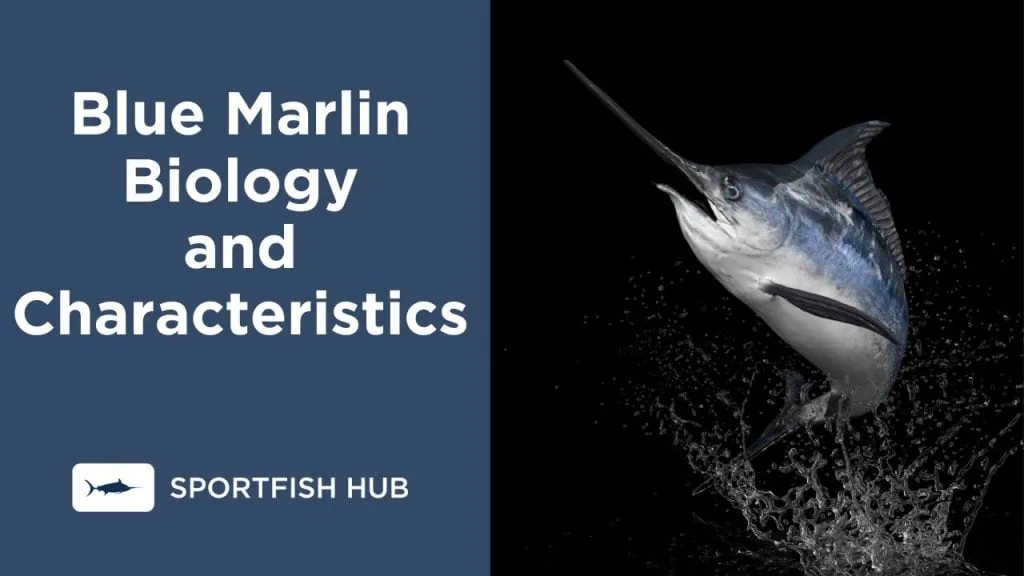
Blue Marlin Facts and Behavior
| Feature | Description |
|---|---|
| Size | Up to 16 ft long, females up to 1800 lbs |
| Lifespan | Females up to 27 years, males up to 18 years |
| Habitat | Tropical and subtropical oceans, surface to 500 ft depths |
| Food | Tuna, mackerel, squid, other fish |
| Unique Adaptations | Bill for stunning prey, warm brain and eyes, high speed |
Blue marlin have a number of adaptations that make them powerful hunters:
- Their long, rigid pectoral fins act like airplane wings, providing lift as they chase down prey.
- The spear-shaped upper jaw is used to slash and stun fish, making them easier to catch. They can swing their bill from side to side to incapacitate prey.
- Blue marlin are fast swimmers, capable of bursts up to 50 mph to capture prey. This is slower than their billfish cousin the swordfish but faster than most open ocean predators.
- They have special blood vessels called retia mirabilia that keeps their eyes and brain warm, giving them an advantage finding food in cold deep temperate waters.
- Blue marlin dive down to depths of over 500 ft daily to feed but must return to warm surface waters to re-warm. They spend most of their time in the upper 100 m of the water column.
- They have few predators as adults, mainly white sharks and shortfin mako sharks. Their main threat is human activity including commercial longline fishing and sport fishing.
- To conserve blue marlin populations, most are now tagged and released. Quick handling and revival helps post-release survival.
Why Target Blue Marlin?
For serious anglers, blue marlin represent the pinnacle of big game fishing. Here are some of the reasons they are so highly prized:
- Trophy fish – Atlantic blue marlin reach up to 16 feet and 1800 lbs; a ‘grander’ is any marlin over 1000 lbs
- Amazing fights – Their strength and stamina provides long, challenging battles
- Acrobatics – Blues are known for spectacular jumps, tail walks and greyhounding
- Ocean wanderers – Highly migratory species found far offshore
- Tasty meat – Excellent table fare as sashimi or smoked marlin
Catching a blue marlin is a major angling achievement and is considered the highlight of many fishing careers. Their power and aerial displays make them one of the ultimate big fish for any angler to catch.
Blue Marlin Habitats
Blue marlin are open ocean wanderers found throughout the tropical and subtropical waters of the Atlantic, Pacific and Indian Oceans. They migrate long distances following prey fish and spawning cycles.
Some key habitats include:
- Atlantic Ocean – Gulf of Mexico, Caribbean Sea, Bahamas, off Brazil
- Pacific Ocean – Hawaii, Tahiti, Australia, Japan, Mexico, Ecuador
- Indian Ocean – Africa, Seychelles, Sri Lanka, India
Blue marlin prefer warm surface waters above 70°F with uniform temperature and salinity.
Where to Find Them
Blue Marlin Global Hotspots
| Ocean | Top Locations |
|---|---|
| Atlantic | Gulf of Mexico, Caribbean, Bahamas, Brazil |
| Pacific | Hawaii, Tahiti, Australia, Japan, Mexico |
| Indian | Seychelles, Sri Lanka, South Africa, Mauritius |
Prime blue marlin fishing hotspots include:
- Gulf of Mexico oil rigs and reefs
- Puerto Rico and Dominican Republic
- Bahamas
- Bermuda
- Florida Keys
- Hawaii and Tahiti
- Costa Rica
- Australia – Cairns and Great Barrier Reef
- Ecuador – Galapagos Islands
- Cape Verde Islands, West Africa
Best Time to Catch Blue Marlin
The peak blue marlin fishing seasons are:
- Spring – April to June as waters warm
- Summer – Peak season for most locations
- Fall – September to November for migratory hotspots
The exact timing follows warm water and migrating prey like tuna, mackerel and squid.
Prime fishing months by location:
- Caribbean – April to November
- Gulf of Mexico U.S. – May to September
- Bermuda – May to October
- Hawaii – May to October
- Australia – September to December
- South America – December to April
Blue Marlin Fishing Methods
Experienced crews use various fishing methods to target blue marlin:
Trolling with Lures
- Most common method to cover water and find feeding fish
- Lures imitate prey and trigger instinctual strikes
- Speeds of 6-9 knots
- Lures rigged on heavy tackle from outriggers or transom
Live Bait Fishing
- Living baitfish trigger instinctual feeding response
- Slow trolled at 2-4 knots
- Blackfin tuna, mackerel, bonito popular baits
- Produces less but higher quality bites
Dead Bait Fishing
- Uses rigged dead baits like tuna, mackerel, squid
- Often fished naked or with minimal skirts
- Fresh dead baits seem most natural to blues
Using a combo spread with lures, live bait and dead bait covers all bases to hook marlin.
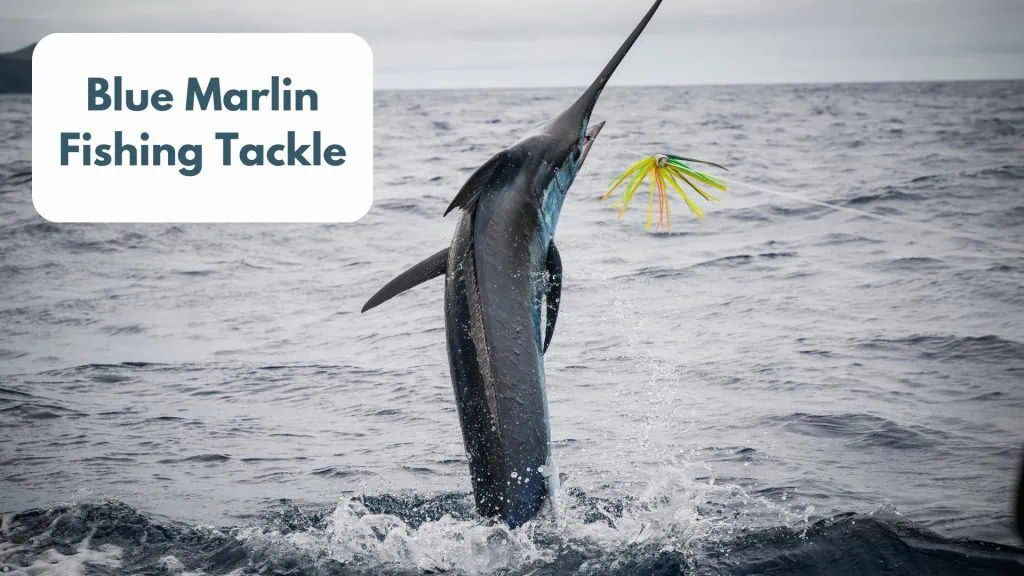
Blue Marlin Fishing Tackle
Targeting blue marlin requires specialized heavy tackle designed for big game:
- Rods – Heavy duty 4/0 and 6/0 roller rod sets rigged for circle hooks
- Reels – Large big game reels like Penn Internationals filled with braided line
- Line – 80-130 lb braided line with topshot leader
- Lures – Large 7-16 inch skirted lures like Ilanders, Pakula and Marlin Magic
- Live bait rigs – Hooks, release clips and bridles to present baits
- Gaffs, harpoons – To boat the fish after a long fight
- Fighting chair – Angled chair to battle big fish
Having the right gear is key to stopping hard-charging marlin. Work with a knowledgeable outfitter to rig properly.
Atlantic Blue Marlin vs Pacific Blue Marlin
Atlantic and Pacific blue marlin are considered separate subspecies, Makaira nigricans and Makaira mazara respectively. There is still some scientific debate whether they are distinct species. However, there are several key differences between the two:
- Range – Atlantic blue marlin are found only in the Atlantic Ocean, while Pacific blues occur in the Pacific and Indian Oceans. Their ranges do not overlap.
- Size – Pacific blue marlin on average grow larger than their Atlantic counterparts. The biggest blue on record, weighing 1376 lbs, was a Pacific blue caught in Hawaii.
- Features – Pacific blue marlin tend to have a taller dorsal fin and more pronounced spear-shaped upper jaw compared to Atlantic blue.
- Coloration – Pacific blues feature a deeper royal blue on the dorsal side, while Atlantic blues are often a lighter blue shade. Pacific marlin also commonly have distinct vertical blue stripes.
- Migrations – Pacific blue marlin migrate across wider ranges and greater distances than Atlantic marlin.
- Status – Atlantic blue marlin stocks are more depleted currently than Pacific stocks due to fishing pressure. Better management has helped conserve Pacific blues.
Releasing vs Keeping Marlin
Most marlin are now released after capture to conserve stocks. Consider tag-and-release to preserve the fishery. Quick releases after a short fight help marlin survival.
If keeping your catch:
- Check current regulations on minimum size limits
- Use circle hooks to prevent gut hooking
- Dispatch quickly with harpoon or shot to the head
- Ice thoroughly; their meat deteriorates quickly
- Marlin flesh makes excellent sashimi and smoked marlin
Practice responsible sport fishing by limiting catches and avoiding waste.
Finding a Quality Charter
Professional charter captains increase your odds of hooking blue marlin. Look for these traits in a charter:
- Modern sport fishing boats suitable for offshore fishing
- Knowledge of productive fishing grounds and techniques
- Expertise in rigging baits and spreads for marlin
- Patient, experienced crew used to long fights
- Commitment to ethical angling and fish care
A top-notch crew makes all the difference in finding and catching marlin. Do your research to find the best operators.
Blue Marlin Fishing Adventure Awaits
From the tropical paradise of Hawaii to the clear waters of the Bahamas, prime blue marlin fisheries exist around the world. For anglers up to the challenge, few fishing experiences can match the thrill of battling these powerful billfish. With the right captain, boat, tackle and techniques, the hunt for your first blue promises an exciting seafaring adventure.
FAQ
-
What tackle is best for targeting blue marlin?
Use heavy roller-guide rods, big game reels loaded with braided line, large trolling lures, and fighting chairs rated for 100+ lb fish. Match the tackle to their sheer size and strength.
-
What Makes Blue Marlin Light up?
Blue marlin light up due to tiny crystals in their skin that reflect light when melanophores contract. The crystals create iridescent blue colors in response to fight-or-flight reactions.
-
Is blue marlin good eating?
Yes, their meat is quite tasty as sashimi, smoked marlin, or marlin jerky. Their high oil content makes them taste best when prepared and eaten very fresh.
-
What is the IGFA world record for blue marlin?
The all-tackle IGFA record is 1402 lbs caught off Vitoria, Brazil. The Pacific record is 1376 lbs from Kona, Hawaii. Much bigger unverified catches have been reported.
-
What is the difference between blue marlin and black marlin?
While related, blue and black marlin belong to different species. Blue marlin tend to be smaller, with a spear-shaped upper jaw and brilliant blue coloring. Black marlin are larger on average, with a rounded pectoral fin and dark black-brown color.
-
Can Blue Marlin see color?
Blue Marlin are actually color blind, only able to see through the blue spectrum of color. Marlin rely on motion, reflections, and contrast to detect their prey.

